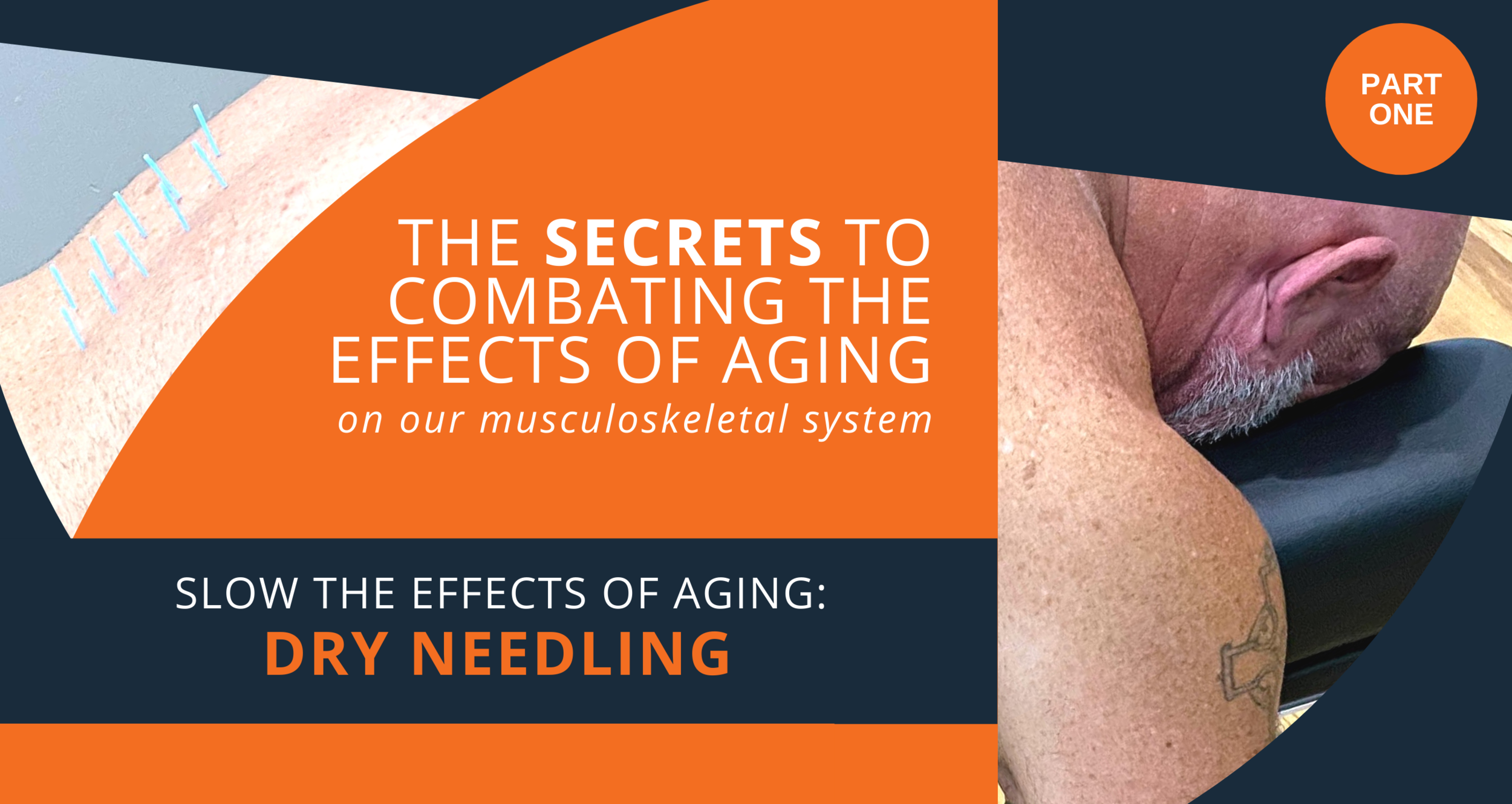THE SECRETS TO COMBATING THE EFFECTS OF AGING ON OUR MUSCULOSKELETAL SYSTEM: PART ONE DRY NEEDLING
Slow the Effects of Aging
Part 1: Dry Needling
Dry needling decreases inflammation and pain and relaxes muscles along the spine for 66-year-old Stan. Needles are applied to the lower thoracic spine facets.
Many CoachAmyPT patients over the age of fifty report that joint aches and pains prevent them from enjoying an active lifestyle, including playing pickleball, golfing, hiking, and cycling. Age-related degenerative changes in connective tissue and cartilage are key contributors. Dry needling can indirectly slow down these changes, helping older patients get back to the pickleball court and on the golf course.
Aging muscles can be like a too-tight pair of jeans.
Imagine trying to sit down in jeans that are two sizes too small. It’s either impossible, painful, or the jeans rip. That’s what it’s like when your connective tissue (tendons, ligaments, and muscles) become hardened and shortened with age. This disrupts the proper mechanics of the joints. Regular dry needling relaxes connective tissue, which helps to restore proper joint movement so you can get back to the activities you enjoy.
Aging cartilage can be like hardened Silly Putty.
Connective tissues are not the only structures affected by age. Imagine Silly Putty that has been left outside of the container too long. It loses its stretchiness, cracks, and breaks. Cartilage, which acts as a cushion absorbing forces in our joints, loses elasticity as our body matures. This loss of integrity makes the joints more vulnerable to damage from injury and overuse. The poor mechanics from aging connective tissues, the “tight jeans” example, compounds these effects.
Unfortunately, joint damage caused purely by aging cartilage cannot be reversed or cured. However, once-a-month dry needling maintenance decreases pain and enhances blood supply, slowing progression. Reducing pain disrupts a vicious cycle that leads to more trauma and stress to the involved joint. The increased blood supply brings vital nutrition and oxygen to the joints.
Preventing deterioration of cartilage is a key factor in slowing the aging process. Loss of cartilage can lead to Degenerative Joint Disease (DJD), one of the most common age-related ailments of the musculoskeletal system. DJD afflicts more than 50% of people older than 65 years of age. The impact of needling on the treatment of DJD is addressed in an upcoming CoachAmyPT article. To be sure to catch that post, subscribe.
Back to pickleball.
While we can’t stop time, once-a-month dry needling can slow down the detrimental effects of aging by enhancing blood supply and improving the mobility of connective tissues and joints, especially in combination with proper exercise. Strong muscles improve the mechanics and support of the joints.
Enjoying your the pickleball game, family hike or bike ride or weekly golf game with less pain is a reasonable, achievable goal. Addressing the impact of age on connective tissue and cartilage with dry-needling is a powerful first step.
Do you want to learn more secrets to combating the effects of aging on your musculoskeletal system? Next up in our series is Slow the Effects of Aging Part 2: Strengthening and Resistance Exercise, followed by:
If you’re interested in arranging dry needling with CoachAmyPT, make an appointment today. Please note, most insurance companies do not cover preventative/wellness appointments. Dry needling appointments are self-pay. When making an appointment for dry needling:
Current CoachAmyPT patients: choose Self Pay Physical Therapy Appointment.
New CoachAmyPT patients: choose Self Pay Evaluation Appointment for your first appointment. For all subsequent appointments, choose Self Pay Physical Therapy Appointment.



